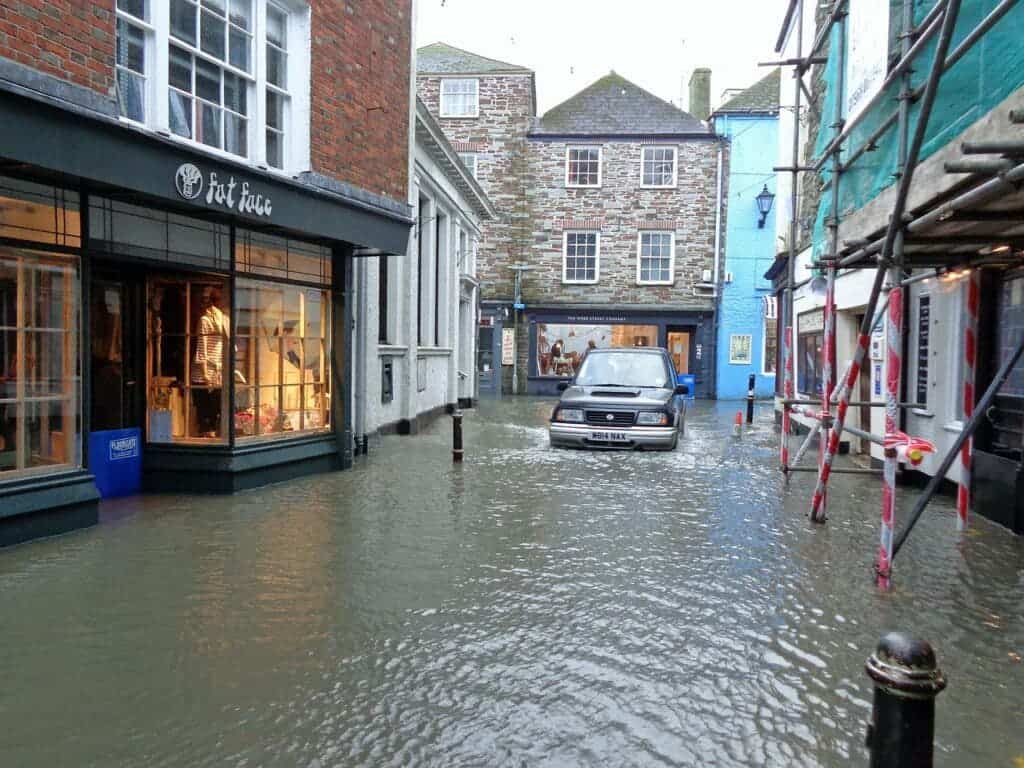The residents of northern Georgia, US, aren’t very used to flooding. So when severe rain started falling in September 2009, most people didn’t pay much attention. But the rain kept falling and falling, submerging entire neighborhoods, roads, and bridges.
The Georgia flood seemingly came out of nowhere, but results from a new study suggests it may have not been all that much of a freak occurrence. Instead, it may be the result of the combined effect of urban development and greenhouse gases.

Matei Georgescu, associate professor in ASU’s School of Geographical Sciences and Urban Planning, has spent much of his time studying phenomena related to urbanization-induced landscape change. There’s a lot to look at: the cities we’ve grown so accustomed to still have environmental effects that are poorly understood.
The Urban Heat Island effect, for instance, was first investigated and described by amateur meteorologist Luke Howard in the 1810s. In recent decades, especially as climate change started entering into force, researchers also paid increasing attention to this effect. In principle, it’s pretty straightforward: cities are hotter than the surrounding areas. This happens because they’re darker and absorb more radiation from the sun and because materials like concrete or asphalt keep the surroundings warmer. Combined with climate change, this creates a double whammy on urban environments, shifting precipitation patterns.
“When we account for these twin forcing agents of environmental change, the effect of the built environment and the effect of greenhouse gasses, we note a strong tendency toward increased extreme precipitation over future US metropolitan regions,” said Matei Georgescu, lead author of the study.
Georgescu and colleagues published one of the very first studies to look at the combination of urban development and climate change. They used climate-scale simulations with regional climate models to examine potential changes in future extreme precipitation resulting from both urban expansion and increases in greenhouse gases across dozens of cities across the continental United States, says Georgescu. The results are clear: flooding events can get more extreme.
“Our results demonstrate that the intensity of extreme precipitation across future metropolitan areas of the United States will increase as a result of urban development and greenhouse gas concentrations,” Georgescu explained toZME Science. “The increased intensity of extreme precipitation will result in increased urban flooding absent any adaptive modifications to the built environment. “
“However, it is important to mention that our results do not specifically examine the change in frequency of extreme precipitation. That is an altogether separate question that we are also investigating.”

The study focused on the US, but the operating principles are the same for other parts of the world. Georgescu believes cities from other continents may even have even greater problems to deal with, which is why it’s so important to have regional studies that look at this effect.
“The one caveat would be that in other parts of the world, urban areas are changing in different characteristic ways than in the US and the interaction between the built environment and increased greenhouse gas concentrations may result in a different magnitude of extreme precipitation changes – perhaps an even greater intensity of change or perhaps a reduced intensity of change,” Georgescu tells me. “For this reason, there is great urgency in conducting such research since global cities have varying sensitivities to urban flooding.”
There are ways to mitigate it, but it won’t be easy. Trees and other vegetation can help by reducing surface water runoff. Porous roads and sidewalks would also be of benefit. But ultimately, “there isn’t one single strategy that could or should be conceived as a panacea.”






